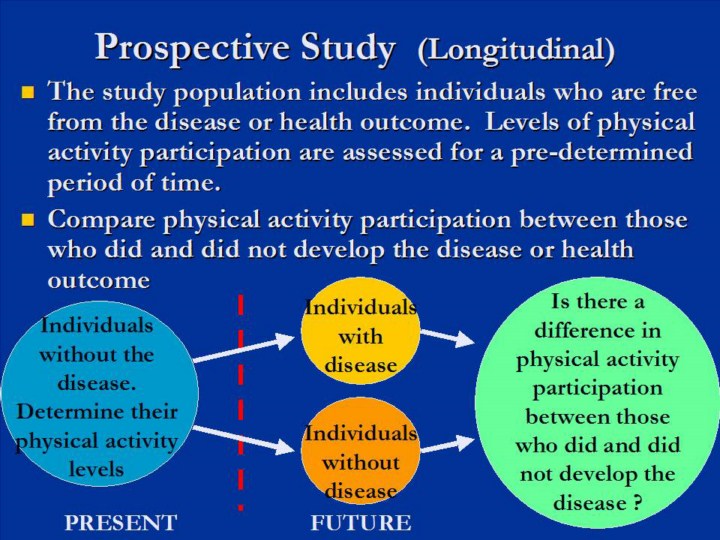| front |1 |2 |3 |4 |5 |6 |7 |8 |9 |10 |11 |12 |13 |14 |15 |16 |17 |18 |19 |20 |21 |22 |23 |24 |25 |26 |27 |28 |29 |30 |31 |32 |33 |34 |35 |review |
 |
PROS:
Can
establish cause and effect. Through the use of this study design,
investigators are able to determine if physical inactivity lead to the
disease or health outcome of interest.
Can
directly measure the development of disease or condition of interest in
both those who do and do not participate in physical activity.
CONS:
Not
a good study design for studying rare diseases or conditions because the
investigators have to wait for individuals to develop the disease or
condition of interest.
Can
be costly and time-consuming
Often
requires a large sample size to ensure that enough study participants
will develop the disease or outcome of interest during the course of the
study.
This
study design is subject to participants dropping out or being loss to
follow-up (cant be found) because of the lengthy study time.
Recommended Reading: Gordis L (2000). Epidemiology (2nd ed.). Philadelphia, PA: W.B. Saunders Company.
|